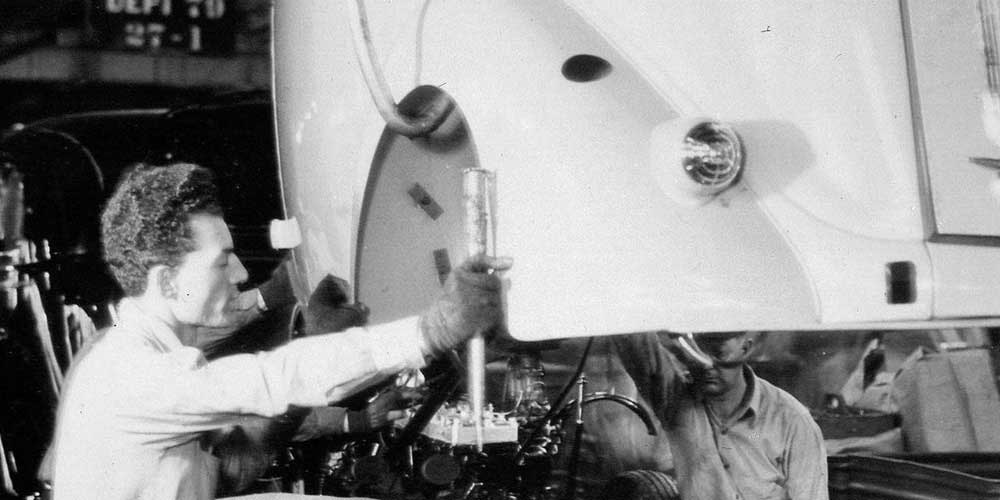By: Robert Tate
Photos courtesy of the National Automotive History Collection and Robert Tate's collection
Posted: 02.01.2016
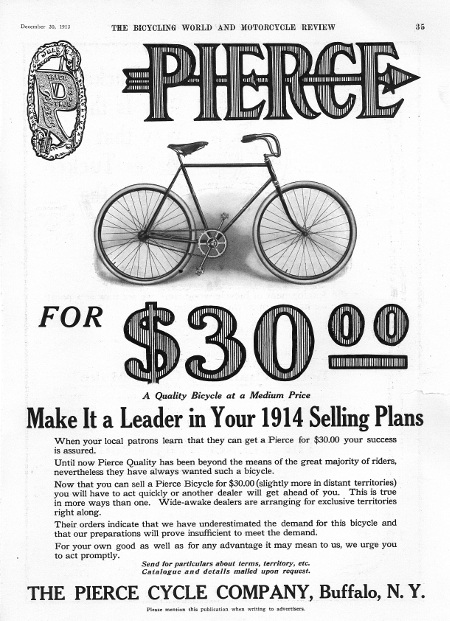
Before the automobile changed personal transportation forever, one of the most popular means of getting around was the bicycle which was first manufactured in America in the early 19th century.
History credits the Columbia Bicycle at the Weed Sewing Machine Company factory in Hartford, Ct., as the first mass producer of bicycles in America. The first bicycles were 60-inch High Wheelers and sold for $125 which was very expensive for most American families at the time.
Naturally, each year saw many changes in the structural parts of the wheel but it wasn’t until 1880 that the first radical departure was inaugurated in the form of what was called the “American Star.”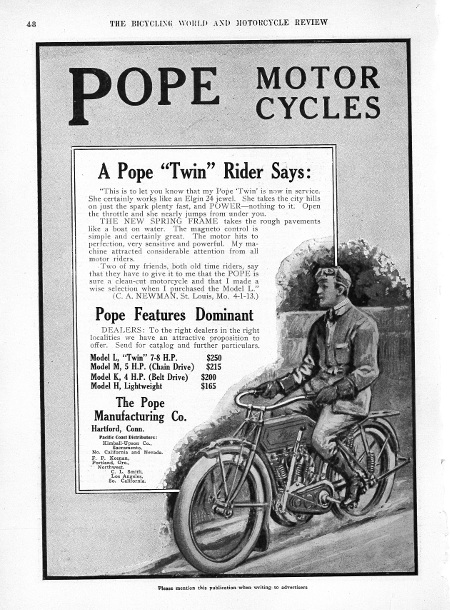
In 1886, the Swift Safety Bicycle had become very important among consumers as a way of transportation. During the 1900s, internal hub gears were introduced and formed by Sturmey Archer, who had created and developed a process for many bike manufactures all over the world.
During the early days of transportation, the “Pierce” bicycles became very popular for consumers right around 1914. One could purchase a great looking, high-quality bicycle for $30 and become a part of the great cycling community. The Pierce Cycle Company was located in Buffalo, New York.
Other manufacturers included other recognizable companies who helped to establish the bicycle as a staple of everyday life. Bicycle historians often call the 1890s the period of the “golden age or “bicycle craze.”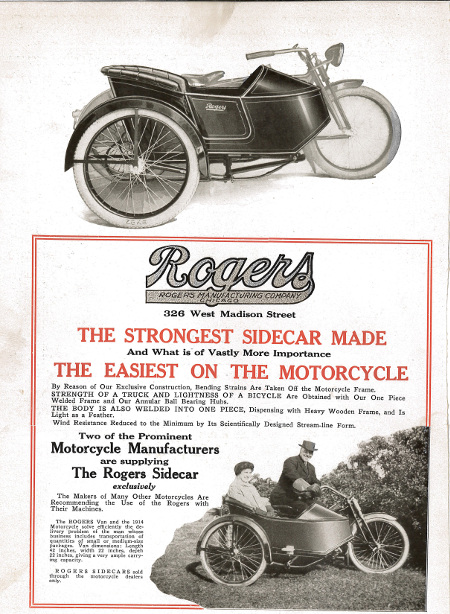
By the start of the 20th century, cycling had become an important means of transportation for many Americans. By that time, however, a motorized version of the bicycle started its early development in the second half of the 19th century deriving its design from the safety bicycle. Motorcycles, much like the bicycle, quickly found themselves planted in the history of personal transportation.
Pierre Michaux, who was a blacksmith from Paris, was one of the earliest designers of motorcycles along with Mr. Pierre Lallement, who had developed a prototype in 1863.
Lallement developed a motorcycle prototype in 1863 and filed for the first bicycle patent with the U.S. patent office in 1866. In 1868, an American by the name of Sylvester H. Roper of Roxbury, Mass. had developed a twin-cylinder steam Velocipede which is a bicycle with pedals and a coal-fired baler between the wheels.
Some of the great designs from the early days of motorcycles included the Pope Manufacturing Co. which offered a new spring frame system along with a great suspension and seats. Another early name was the Henderson Roadster which was manufactured in Detroit. The Henderson was a great looking bike that offered a four-cylinder engine. The two-speed model sold for $325.
Another important feature in motorcycles was the Rogers Sidecar which was made in Chicago. The Rogers Sidecar was designed for delivery of medium size packages or for adults when it came down to traveling as a passenger. During the First World War, motorbike production was greatly increased for the war-time effort to supply effective communications with front line troops.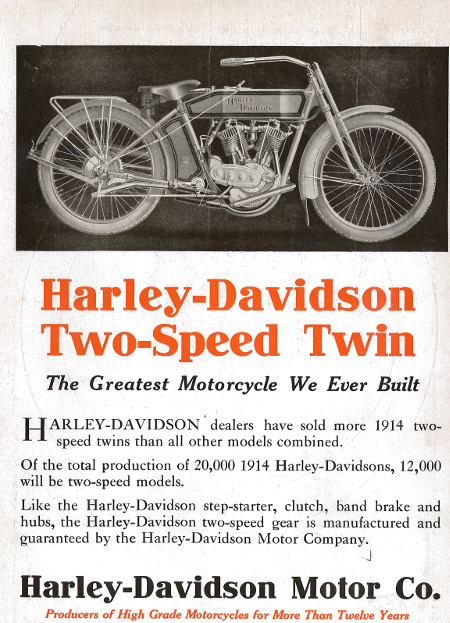
One of the most famous names in American motorcycling culture, if not the most famous, is Harley-Davidson. Harley-Davidson has a popular name plate that people from all over the world can identify with.
The history goes back to the Davidson brothers during the early 1900s. The company started with Harley and Arthur Davidson, who built their first production Harley-Davidson in 1903. The first Harley-Davidson dealer opened for business in 1904, and in 1907 the Harley-Davidson Motor Company was formally incorporated.
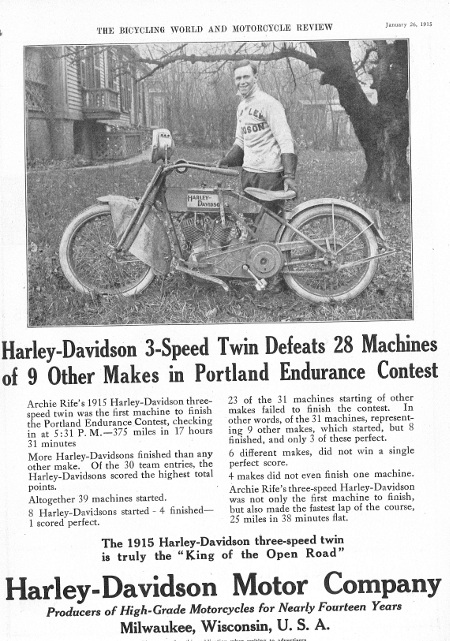
Soon after the Harley-Davidson family began to have success with their new motorcycles. In 1908, the late Walter Davidson scored a perfect 1000 points at the 7th annual Federation of American Motorcyclists Endurance and Reliability contest. In 1914, Herbert Meyers won the Lorain Quarterly Trials on January 4th.
The brothers than used that success in their branding for the company. The 1914 advertising campaign for Harley-Davidson stated “Harley-Davidson is a machine built so that it will not only demonstrate its reliability occasionally, but that it will win endurance contests more often and more decisively than any other motorcycle.”
Harley-Davidson has been a part of our American culture for over 100 years and it will be one of the most leading companies for the many generations to come.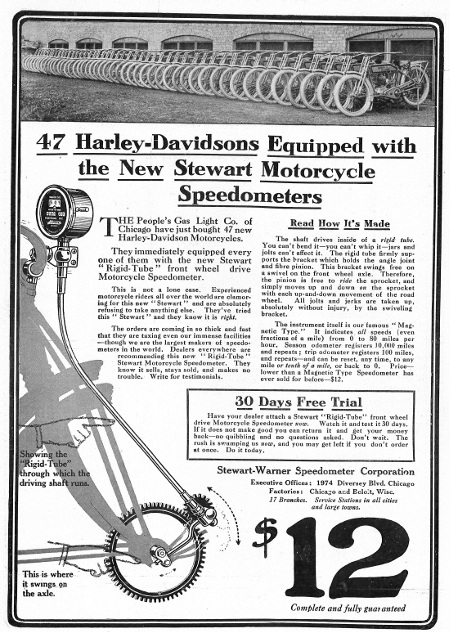
A special thanks to Robert Tate, Automotive Historian and Researcher, for contributing this story to the MotorCities Story of the Week Program. (Bibliography: Scientific American, “Half A Century in the development of the bicycle” February 10, 1900; Ware Porter W. “Evolution of the Bicycle;” Hobbies, the magazine for Collectors, February ,1962; Harley-Davidson Motorcycle History, The National Automotive History Collection vertical files.)
For further information on photos please visit http://www.detroitpubliclibrary.org/ or email This email address is being protected from spambots. You need JavaScript enabled to view it.. Please do not republish the story and/or photographs without permission of MotorCities National Heritage Area.
If you would like to contribute an article for the MotorCities newsletter, email This email address is being protected from spambots. You need JavaScript enabled to view it. or call 313-259-3425.


